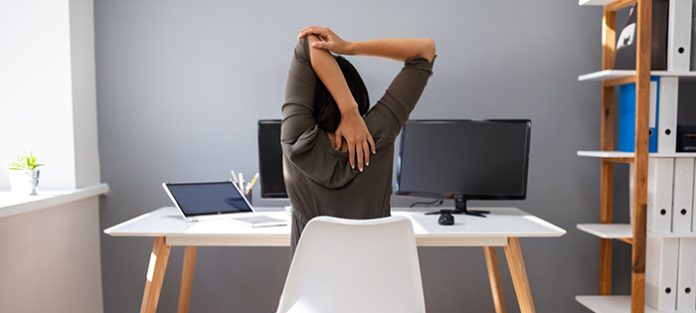
Rate this article and enter to win
—Angel J.*, University of Massachusetts Lowell
Your posture is leading to some imbalance and probably overusing certain muscle groups. It’s a common ergonomic problem, especially during exam times.
How to improve your study posture
- Sit in a comfortable chair with your feet flat on the ground.
- Allow your elbows to rest comfortably at your side or be supported by the arms of your chair.
- Center your head over your spine and let your back be comfortably supported by the chair.
- Make sure your desktop is at the height of your hands, allowing your wrists to sit in a neutral position.
❗️Important: Be sure to get up and move around a little every 30–45 minutes. Roll your neck and shoulders. Bring your shoulders together for a count of five, and then relax them. Now cross your arms across your chest as far as you comfortably can. Try 5–10 sets of these.
While you’re at it, do some eye calisthenics, such as focusing on something as far away as possible for a little while. Personally, I like to watch birds, though I sometimes get distracted for a little too long. Oh, well.
Keep in mind that even perfect posture can get painful after a while. Remember that your muscles are at work holding up your head and back, even when you’re still. Think of it this way: You wouldn’t expect to be able to jog for hours without resting your quads, hamstrings, and glutes. The same is true for the postural muscles.
*Name changed


























